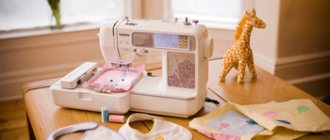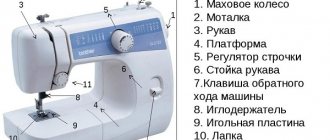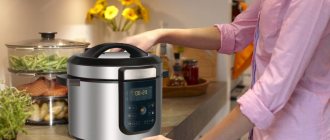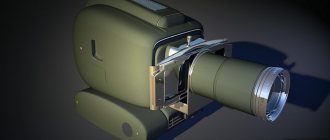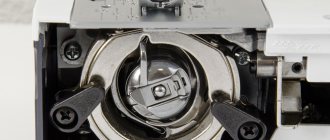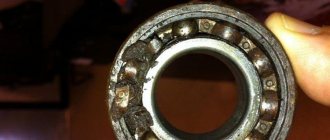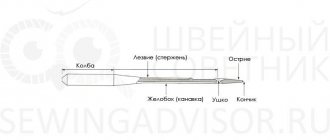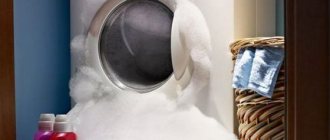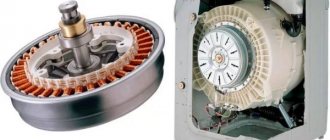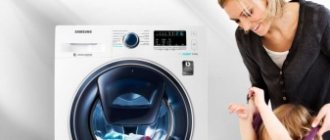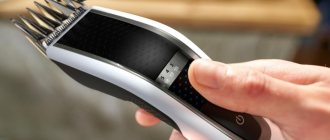A sewing machine is the main tool of a needlewoman. You need to choose it very carefully, having decided on the necessary functions. The appearance should be aesthetic, and the functionality should fully make you feel like a professional. But not only the quality of the device itself affects the service life; proper operation of the device is also important. In order for a sewing machine to serve for a long time, it is necessary to properly maintain it: change parts, clean and lubricate, and adjust mechanisms. This article will tell you how to lubricate a sewing machine, why lubricant is needed at all, and what lubricants are used for this.
Why do you need lubrication?
A sewing machine is a complex device. When creating a stitch, many mechanisms work simultaneously. If you do not clean and lubricate important components on time, the mechanisms will become clogged and fail. This will entail breaking threads, creaking, knocking and general noise. In the worst case scenario, the machine will not work and you will have to replace it.
How to sew a pencil case
Lubricants are needed for:
- Extending service life and improving overall quality of work;
- Easier needle movement;
- Reducing noise during operation;
- Prevent thread breakage and fabric damage;
- Easy and quick adjustment of mechanisms.
Old manual typewriter
Important! Old machines are lubricated every 90 days, while new ones require inspection every 6 months. If the work intensity is low, you can lubricate moving parts once a year.
With constant use, it will immediately become noticeable when new oil is needed.
Old unit Podolsk
What you need for work
To lubricate the machine correctly, you should prepare everything necessary for this. And you may need:
- Machine oil. You can buy it at any hardware store. Even 100 grams of oil will be enough for your head;
- Medical syringe. It is convenient for them to lubricate those parts of the machine that are difficult to get to without disassembling it;
- Brush. A small brush will do a great job of removing dust, dirt and old oil;
You may be interested in: Rules for sewing buttons with two and four holes
Cleaning kit
- Screwdriver. Some things still have to be unscrewed. On some machines you need to disassemble the body, and on some - certain parts and covers;
- Napkin or cloth. Remains of new and old oil and dust can be safely removed with a napkin;
- Film for surface protection. If the machine has not been cleaned for a long time, there may be a lot of dirt on it, which will end up on the tablecloth or carpet.
Important! This is exactly the set you need to perform high-quality professional cleaning conscientiously.
Sewing machine Veritas
Lubricant for industrial sewing equipment
The latest industrial devices have an automatic lubrication system. You just need to look at the oil level from time to time and fill the reservoir if the mark is below normal.
You may be interested in Altering a skirt onto a dress and vice versa: sewing it yourself
Some older industrial sewing machines, like household sewing machines, are lubricated using a drip or dry lubrication system. In this case, the main rubbing parts and mechanisms must be processed manually and only by qualified specialists.
Typically, industrial units are treated with mineral or synthetic oils. Among synthetic compounds for sewing mechanisms, silicone ones are in particular demand. This type is used only for certain parts of the device, namely:
- blades and knives;
- motor parts and assemblies;
- plastic and graphite elements.
Treatment should be carried out using a coarse brush and spray.
Tools for cleaning and lubricating Janome machine
Which oil to choose
Oil for such purposes has a special viscosity indicator. If it is too viscous and stringy, then the deep parts will not be lubricated properly, but they bear almost all the load. A composition that is too fluid will also not be useful, since it will not have time to penetrate deeper and will simply drain. This means that the lubricant for the sewing machine should be moderately viscous. Usually this parameter is directly indicated on the box and is recognized upon purchase. When working on a high-quality production machine, lubrication may not be necessary, since such units have an automatic lubrication system.
Regular medium viscosity oil
The best oil will be the one that came with it. If it is not there, you need to choose a better quality lubricant. You can find recommendations for choosing on the website of the manufacturer of this machine. Under no circumstances should you use vegetable oil: this can lead to serious damage and rapid contamination.
Toyota Power Fabriq
What is sewing machine oil
Sewing machine oil is a special composition that helps reduce the friction force of parts in the main running units of the machine. A layer of such a substance protects the moving parts of the device from wear and prolongs their service life.
Sewing device
If you need to find out which lubricant is best to use for a particular machine, where the oil compartment is located in devices with an automatic lubrication system, and other points, you should read the operating instructions for the equipment. It comes complete with all devices.
Important! It is strictly forbidden to use machine or vegetable oil, as it does not provide proper lubrication, collects dust and has a bad effect on the operation of both individual components and the entire mechanism as a whole.
User manual
The quality of the oil directly depends on the components from which it is made. Their properties, in turn, are determined by the composition of the primary raw materials. The following types of lubricants are distinguished:
- semi-synthetic. This is a mixture of petroleum and synthetic oils in a certain proportion;
- mineral or petroleum. They are obtained after oil refining. The result is a mixture of high-boiling carbons;
- synthetic oils. They are made through the synthesis of chemical elements, as a result of which the composition is almost completely free of mineral fats and solvents.
You might be interested in this: Creating a pattern and sewing a tulip skirt or dress
Synthetic lubricant
Which components need to be lubricated?
It is necessary to determine which operating units of the device need lubrication. This is usually indicated in the instructions for the machine. If it is lost, you can find an electronic version on the Internet on the same official website of the manufacturer. You can do it even simpler: lubricate all the components where there are moving parts. For cleaning and lubricating, you will need a table from which you must remove all valuables in advance so as not to stain them with oil and dirt.
Lubricating the top
Sewing machine care
Have you been trying to heal your JOINTS for many years?
Head of the Institute for the Treatment of Joints: “You will be amazed at how easy it is to cure your joints by taking the product every day for 147 rubles .
Proper care of the sewing machine , timely cleaning and sufficient lubrication with good quality oil are prerequisites for long-term and uninterrupted operation.
Our readers successfully use Sustalaif to treat joints. Seeing how popular this product is, we decided to bring it to your attention. Read more here...
During work on the shuttle device and under the fabric motor, a particularly large amount of textile dust accumulates. The same dust contaminates other mechanisms of the sewing machine. Therefore, the machine should be cleaned and wiped periodically. Cleaning is done using a cotton rag and a hedgehog or a pointed wooden stick.
All parts of the mechanisms located in the front and sleeve parts of the sewing machine, as well as under the platform, should be wiped. All lubrication holes must be free of dust. The external paint of the sewing machine is wiped with a piece of absorbent cotton wool, slightly moistened with petroleum jelly and alcohol (two drops).
When the sewing machine is not working, it should be covered with a hood or cover.
Sewing machine lubrication
After cleaning and wiping, the sewing machine is oiled. Excess oil must be carefully removed, without smearing, using a rag.
During operation of the sewing machine, all its mutually moving parts are subject to wear on rubbing surfaces. By properly cleaning and lubricating these surfaces, the wear process will be significantly slowed down. A dirty and poorly lubricated sewing machine runs hard and quickly deteriorates, requiring high repair costs.
It is recommended to use special colorless machine oil to lubricate the sewing machine. You can also use Vaseline oil (also a white transparent liquid). It is important that the oil is colorless, especially when sewing white and light-colored fabrics.
Sequence of disassembling and lubricating the machine
Disassembly of the machine is necessary before lubrication. By looking at it, you can immediately identify elements that can be removed and unscrewed. The general operating procedure is as follows:
- Remove the cover from the needle bar by unscrewing the screw and pulling out the cover;
- Turn the device over and unscrew all the bolts at the bottom;
- Pull back the speed selector knob and remove it;
- Remove the cover from the side without touching the flywheel;
- Unscrew all remaining screws;
- Remove the handle fasteners;
- Lower the presser foot handle down;
- Separate the remains of the plastic housing;
- Remove the shuttle from the holder.
You might be interested in How to make beautiful flowers from nylon yourself: instructions for beginners
The device is disassembled
No further disassembly steps need to be taken. All elements can be reached with your hands or a syringe. The further procedure for lubricating the components is as follows:
- Place the machine in a position as if it were going to be used for sewing;
- Fill the syringe with lubricant;
- Slowly turn the flywheel counterclockwise;
- Drop oil onto all existing parts and their joints, which will begin translational and rotational movements;
Digging from above
- Under no circumstances should you touch plastic parts and gears that have already been lubricated with a special compound, this may damage them;
- Lubricate the needle bar parts at friction points;
- Remove excess grease with a napkin or rag;
- Check the progress of the nodes by connecting the power;
- Assemble the machine and give it a couple of hours so that the joints of the parts are saturated with oil;
- Run for a couple of minutes with the presser foot raised.
Digging from above
How to lubricate a Janome sewing machine
Janome are popular machines, so the question is relevant. As with any device, they require constant prevention of breakdowns and lubrication. You need to process at least the main components that set the device in motion.
Before work, it is important to read the cleaning and operating instructions and review all explanatory drawings. You need to remove the cover of the device and pour lubricant into the special holes, and also apply it to the rubbing elements.
Janome Sewist 780D
Brother machine lubrication
No less popular brand of cars. It has its own instructions, but if it is lost, it is important to remind you that a couple of drops of oil are enough for processing. They should only be applied to metal surfaces, avoiding smearing plastic.
Important! The brazer especially needs high-quality wiping of excess oil after processing, as well as idle operation to consume the mechanisms.
Removing the shuttle from the Brother
Singer
High-quality Singer machines require lubrication much less frequently, but still require maintenance. You need to start cleaning them from the needle plate. To do this, the screws are unscrewed and cleaning is performed. Next, the shuttle is cleaned: the cap is removed, and the latches are moved apart. The shuttle parts are removed and cleaned of dust. The same is done with the rotation device itself.
Astralux
To service Astralux you need:
- Remove the needle plate by turning the handwheel until the needle is in the highest position;
- Clean the lower fabric feeder. To do this, take out the bobbin cap and clean the conveyor with a brush;
- Clean the mechanisms and lubricate them. Remove the bobbin and cap and fold the two holders to the sides. When this is done, the shuttle will come out freely and the device can be lubricated;
- Reinstall the bobbin and cap by rotating the handwheel.
You might be interested in How to make beautiful flowers from silk yourself: instructions for beginners
Astralux needs roller lubrication
Vertical shuttle machines
They especially need lubrication, even imported ones. The steps are the same: remove the bobbin and move the clamps apart, take out the shuttle parts and wipe them thoroughly. Put everything back. In such machines it is important that the needle bar is in the upper position.
Machines with horizontal shuttle
Most of these machines have a lube-free shuttle, but this is a ploy to sell new equipment when the old one breaks due to improper use. Any moving mechanism needs lubrication.
Electric Brother Artwork with horizontal shuttle
Machines with rotating rotary shuttle
This type of shuttle is the most reliable and lasts the longest. Another advantage is its high sewing speed. This is due to its popularity in industrial machines. For long-lasting operation, you need to clean it and add three drops of oil.
How often should you clean and lubricate?
If the sewing machine is new, then at first you need to lubricate it once every six months. When the device ages, lubrication is carried out every three months. This largely depends on the intensity of the work.
Hook lubrication
If a person uses a machine every day for several hours, it is necessary to constantly listen to it. If suddenly there are extraneous noises, knocking, creaking or rustling, this is a reason to disassemble it and clean it thoroughly, additionally applying a new portion of lubricants. This will prevent breakdowns and sudden failure of the sewing unit.
In addition to oil and a napkin, you will need a screwdriver
In conclusion, we can say that a sewing machine, no matter how high-quality it is, needs repair and maintenance. In order not to repair a broken component of an expensive product, you need to follow simple rules and periodically inspect the device, listen to the sound of its operation, and lubricate it in a timely manner.
Cleaning and lubricating the sewing machine
Usually all sewing machines are used quite intensively. In some cases, their operating time can be more than 10 hours a day. This is especially true for professional and industrial devices installed in studios, etc. It is not surprising that in this case more careful care of the machine is required. After all, the more often and longer it works, the more intensely it becomes polluted.
Cleaning the machine
During operation, pieces of thread, hair, dust, fabric lint and other types of contaminants may accumulate in the internal parts of the mechanisms. If you do not clean the equipment in a timely manner, then failure can be said to be guaranteed. On the contrary, regular cleaning of the machine will significantly extend its service life.
As a rule, the shuttle and bobbin are cleaned. This is where the greatest intensity of pollution is observed. For thorough cleaning, it is strongly recommended to use the included brush, or purchase a brush with fairly stiff bristles.
Cleaning the bobbin case should be a priority because this is where most of the debris accumulates. This leads to difficult rotation of the mechanism.
Machine lubrication
It must be borne in mind that often there is an individual lubrication scheme for a particular model of sewing machine. It is included in the included operating instructions. Thanks to a detailed lubrication diagram, it will be possible to guarantee high-quality lubrication of all important components of the device. If the diagram was lost, then you can:
- download it from the Internet;
- or call specialists for lubrication work.
At the same time, using fats of animal origin for lubrication is strictly prohibited. For this purpose, you should use only lubricants recommended by the manufacturer and only specialized oils.
To facilitate the lubrication process, you can use either a special oiler or a regular syringe. This will make it convenient to apply a minimum amount of lubricant even to the most inaccessible places of the unit without getting dirty.
As for the frequency of lubrication, experts recommend carrying out lubrication measures at least once every six months. However, if the machine is used in a fairly intensive mode, then even more often - once every three months.
It is not recommended to start sewing immediately after lubricating, as possible excess oil has not yet had time to dry and may stain the fabric. You should wait about half an hour, then let the machine run for a while with the presser foot raised and without fabric. Thanks to this, the oil will be distributed evenly throughout all parts.
If excess lubricant appears, it can be easily removed with a dry cloth.
If you have any doubts about your abilities, you can always contact the service center for help.
